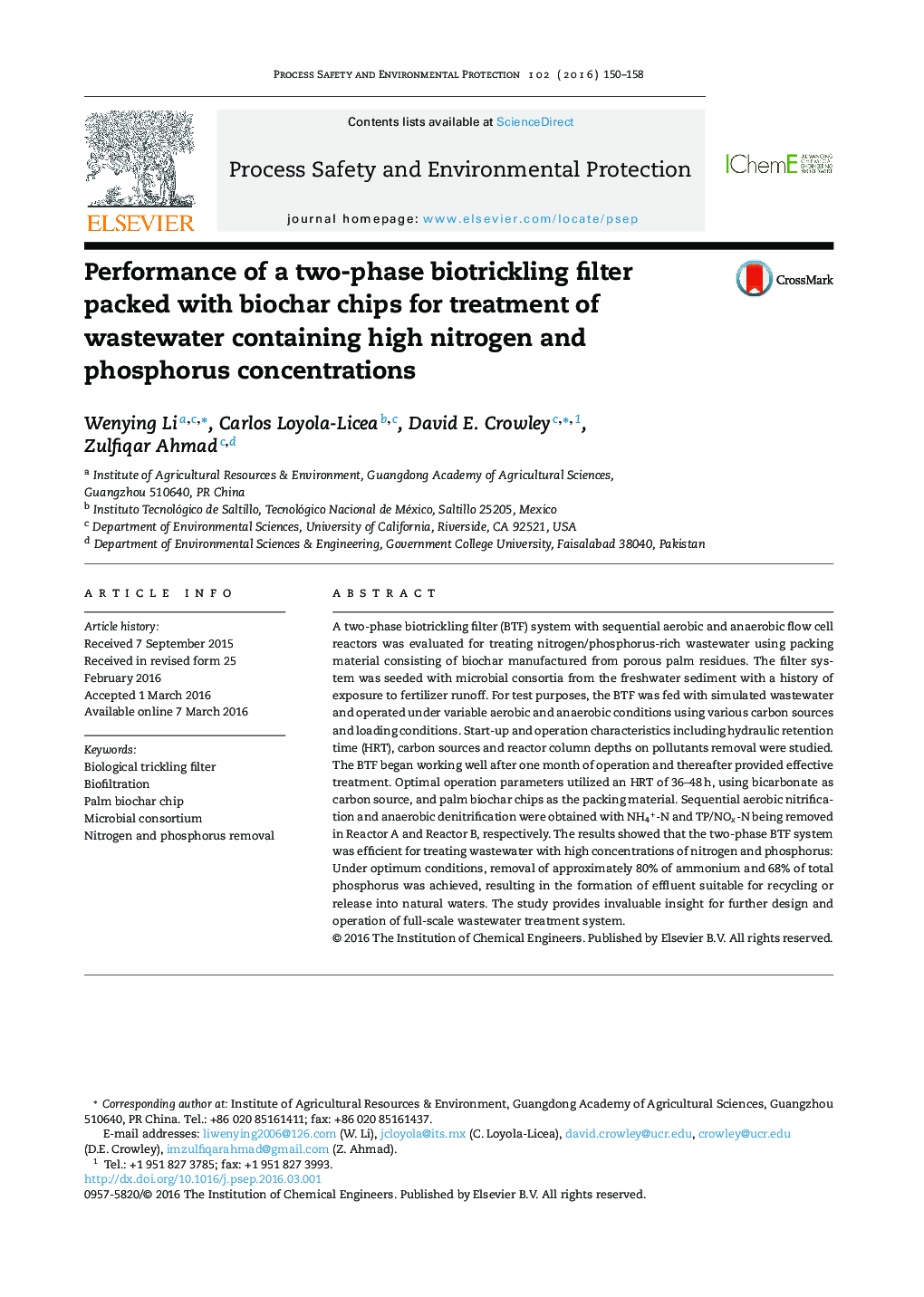| کد مقاله | کد نشریه | سال انتشار | مقاله انگلیسی | نسخه تمام متن |
|---|---|---|---|---|
| 588070 | 1453336 | 2016 | 9 صفحه PDF | دانلود رایگان |
• A novel two-phase BTF system was efficient in treating NH4+-N/TP-rich wastewater.
• Sequential aerobic–anaerobic condition was achieved by coupling two bioreactors.
• Packing materials were porous biochar chips pyrolyzed from palm residues at 700 °C.
• The BTF reached to the optimum at HRT of 36–48 h and bicarbonate as carbon source.
• The design and operation of BTF can be used for full-scale wastewater treatment.
A two-phase biotrickling filter (BTF) system with sequential aerobic and anaerobic flow cell reactors was evaluated for treating nitrogen/phosphorus-rich wastewater using packing material consisting of biochar manufactured from porous palm residues. The filter system was seeded with microbial consortia from the freshwater sediment with a history of exposure to fertilizer runoff. For test purposes, the BTF was fed with simulated wastewater and operated under variable aerobic and anaerobic conditions using various carbon sources and loading conditions. Start-up and operation characteristics including hydraulic retention time (HRT), carbon sources and reactor column depths on pollutants removal were studied. The BTF began working well after one month of operation and thereafter provided effective treatment. Optimal operation parameters utilized an HRT of 36–48 h, using bicarbonate as carbon source, and palm biochar chips as the packing material. Sequential aerobic nitrification and anaerobic denitrification were obtained with NH4+-N and TP/NOx-N being removed in Reactor A and Reactor B, respectively. The results showed that the two-phase BTF system was efficient for treating wastewater with high concentrations of nitrogen and phosphorus: Under optimum conditions, removal of approximately 80% of ammonium and 68% of total phosphorus was achieved, resulting in the formation of effluent suitable for recycling or release into natural waters. The study provides invaluable insight for further design and operation of full-scale wastewater treatment system.
Figure optionsDownload high-quality image (181 K)Download as PowerPoint slide
Journal: Process Safety and Environmental Protection - Volume 102, July 2016, Pages 150–158
